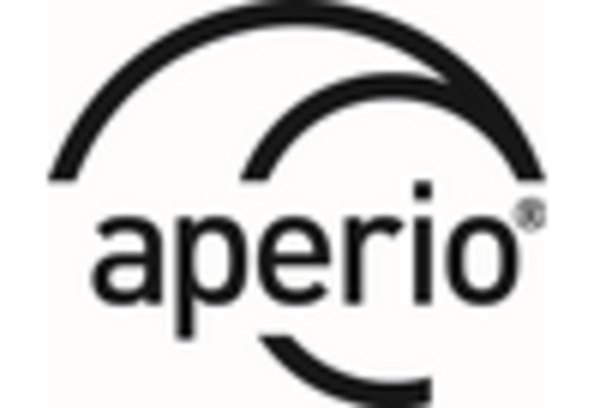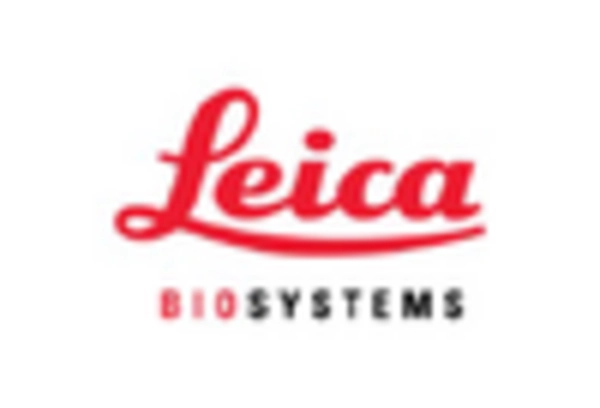The tissue microarray market in South America is characterized by a competitive landscape that is increasingly shaped by innovation, strategic partnerships, and regional expansion. Key players such as Thermo Fisher Scientific (US), Roche Diagnostics (CH), and Agilent Technologies (US) are at the forefront, leveraging their technological expertise to enhance product offerings. These companies appear to focus on integrating advanced digital solutions and automation into their operations, which not only streamlines processes but also improves the accuracy and efficiency of tissue analysis. The collective strategies of these firms suggest a trend towards a more interconnected and technologically advanced market environment, where competition is driven by the ability to deliver high-quality, reliable products that meet the evolving needs of healthcare providers.
In terms of business tactics, companies are increasingly localizing manufacturing to reduce costs and improve supply chain efficiency. This approach seems to be particularly relevant in South America, where logistical challenges can impact product availability. The market structure appears moderately fragmented, with several players vying for market share, yet the influence of major companies remains substantial. Their ability to optimize supply chains and localize production may provide them with a competitive edge, allowing them to respond more swiftly to market demands.
In October 2025, Roche Diagnostics (CH) announced the launch of a new tissue microarray platform designed to enhance diagnostic capabilities in oncology. This strategic move is likely to position Roche as a leader in precision medicine, as the platform integrates advanced imaging technologies that facilitate more accurate tumor characterization. Such innovations not only bolster Roche's product portfolio but also align with the growing demand for personalized healthcare solutions in the region.
In September 2025, Thermo Fisher Scientific (US) expanded its collaboration with local research institutions to enhance the development of tissue microarray applications. This partnership is indicative of Thermo Fisher's commitment to fostering innovation through collaboration, which may lead to the development of tailored solutions that address specific regional healthcare challenges. By engaging with local experts, the company appears to be positioning itself as a key player in advancing research capabilities in South America.
In August 2025, Agilent Technologies (US) unveiled a new initiative aimed at integrating artificial intelligence (AI) into its tissue microarray analysis processes. This initiative is expected to significantly improve data analysis speed and accuracy, thereby enhancing the overall efficiency of diagnostic workflows. The incorporation of AI reflects a broader trend within the industry towards leveraging technology to drive operational improvements and meet the increasing demand for rapid and reliable diagnostic solutions.
As of November 2025, the competitive trends within the tissue microarray market are increasingly defined by digitalization, sustainability, and the integration of AI technologies. Strategic alliances among key players are shaping the landscape, fostering innovation and enhancing product offerings. Looking ahead, it is anticipated that competitive differentiation will evolve, with a shift from traditional price-based competition towards a focus on innovation, technological advancement, and supply chain reliability. This transition may ultimately redefine how companies position themselves in the market, emphasizing the importance of delivering high-quality, innovative solutions that meet the dynamic needs of healthcare providers.


















Leave a Comment